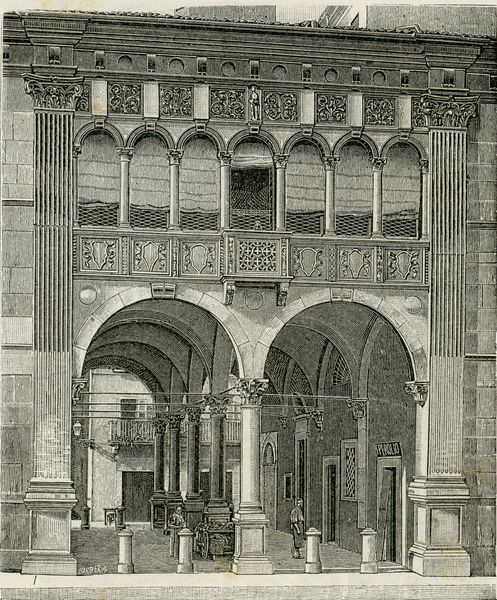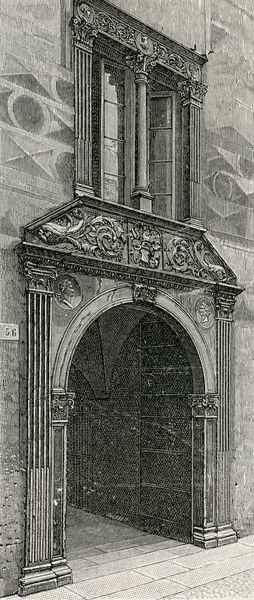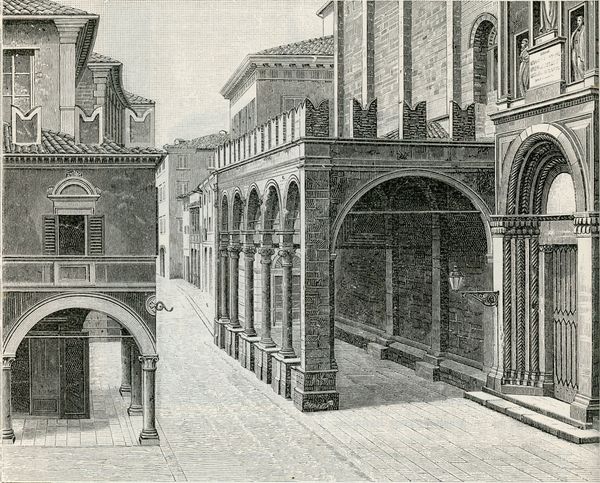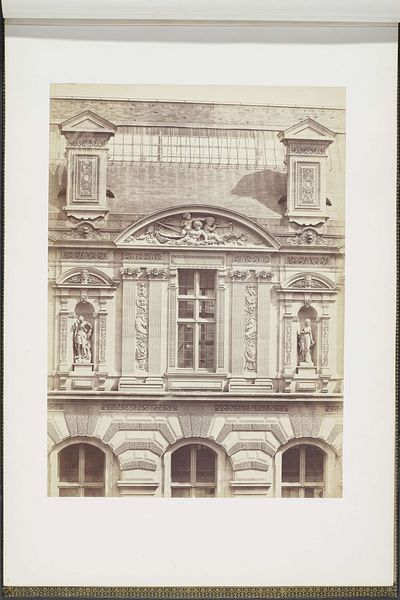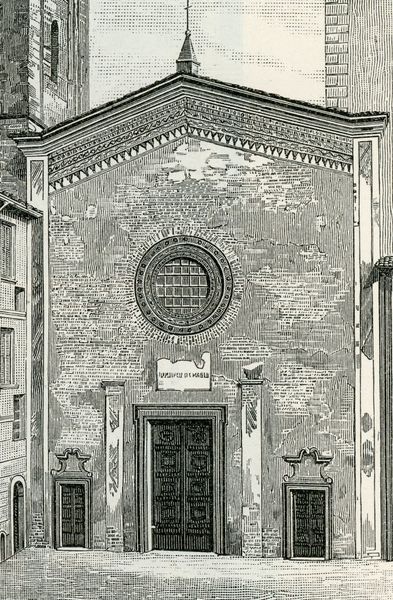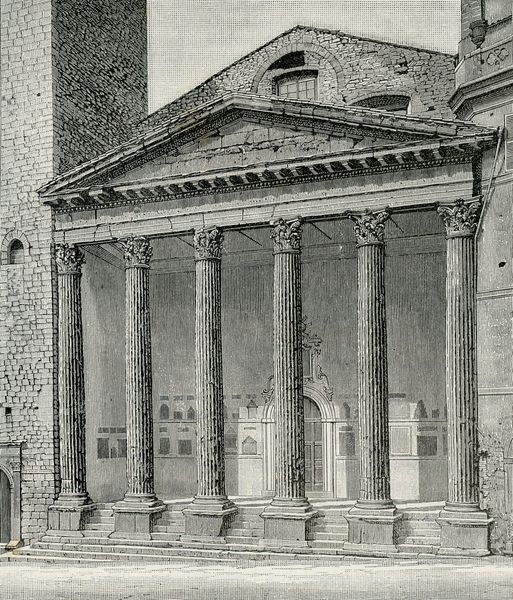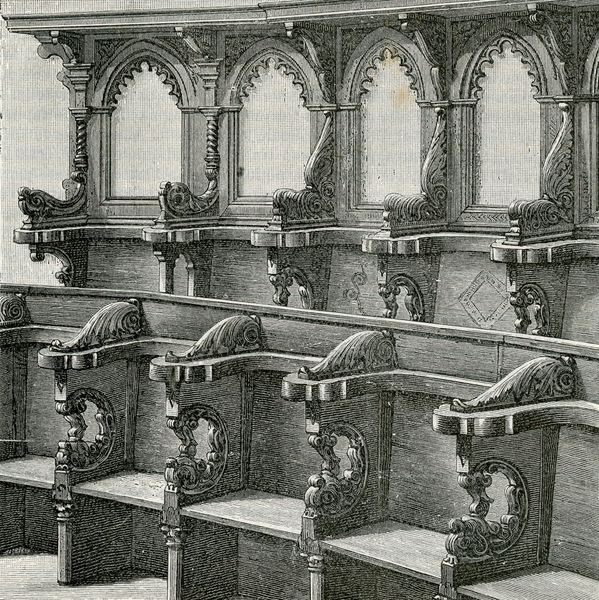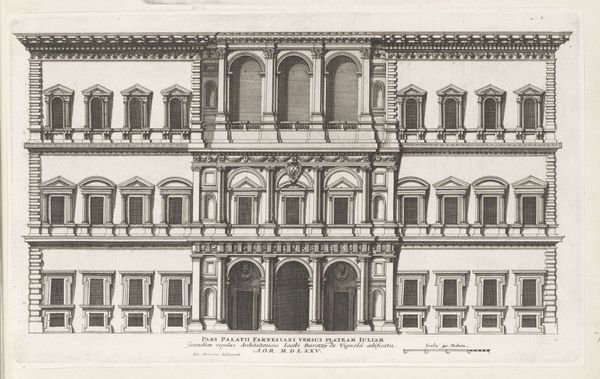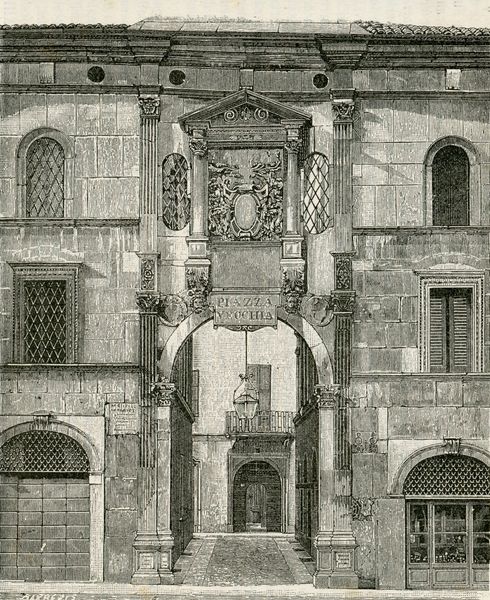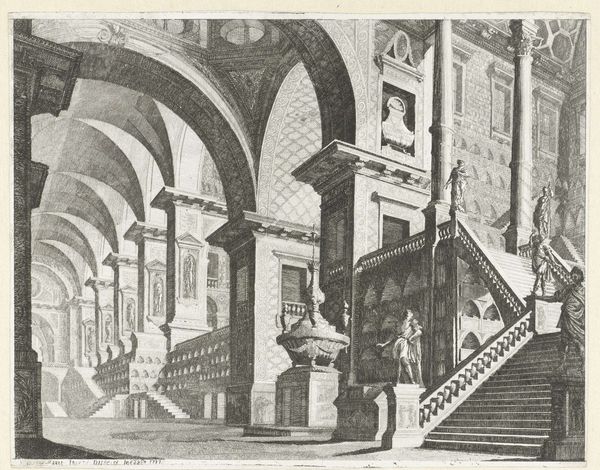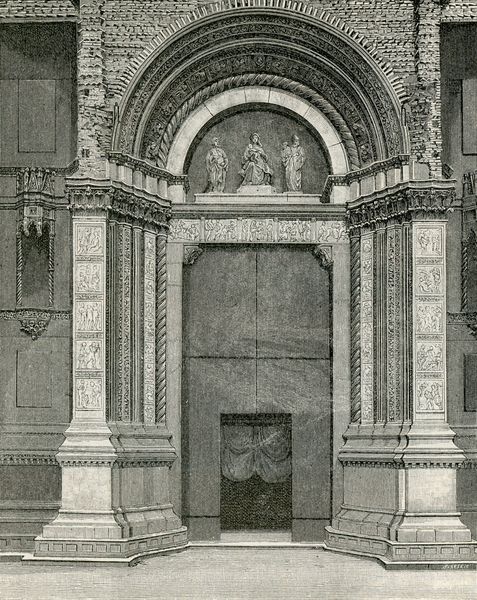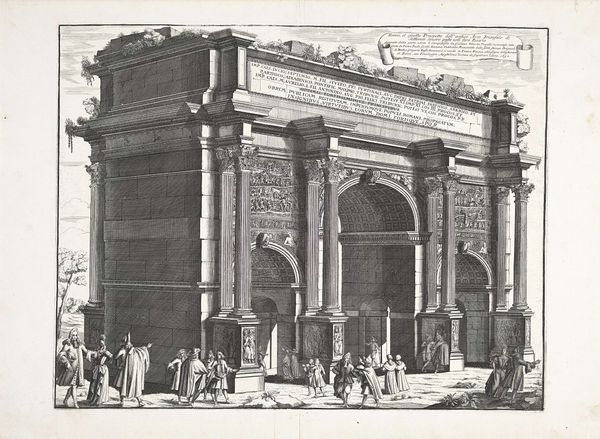
drawing, paper, ink, pencil
#
drawing
#
pencil sketch
#
perspective
#
paper
#
form
#
ink
#
geometric
#
classicism
#
pencil
#
architectural drawing
#
line
#
cityscape
#
academic-art
Copyright: Public domain
Editor: This is Giuseppe Barberis's "Loggia Dei Mercanti," a drawing from 1898, done in ink and pencil on paper. It depicts an Italian cityscape. The craftsmanship involved really jumps out; what do you make of it? Curator: I am drawn to how Barberis employs such labor-intensive methods to represent mercantile architecture. Consider the social context: the late 19th century saw both industrial advancements and a resurgence of interest in traditional crafts. This piece exists in that tension. Editor: I see what you mean. The perspective is meticulously rendered, highlighting the façade's ornamentation, but it feels more like documentation than romanticism. Curator: Precisely. Think about the economic implications of portraying architecture in this manner. Who was commissioning or purchasing these works and why? Was this an attempt to create artistic or economic value for craftsmanship? The drawing almost becomes a commodity itself, echoing the activities of the merchants the building was created for. What do you notice about the details he chose to emphasize? Editor: I am especially drawn to the elaborate carvings above the arches; they demonstrate considerable skill. Does the choice to represent the building this way also suggest a tension between "high art" and craft, potentially elevating the latter? Curator: Absolutely. By focusing on the craft evident in the architectural design and painstakingly reproducing it with other materials – ink, pencil, paper – Barberis blurs the boundaries. This brings in the manual labor aspect which is typically marginalized in discussions of architecture and fine art. Editor: That’s a fresh way to look at it. It challenges the assumption that architecture and drawing, each, exist separately. Now, looking at it through that lens, it makes the whole artwork even more interesting to me! Curator: Indeed, Barberis pushes us to consider how labor and materials shape not just the physical world, but our understanding of value.
Comments
No comments
Be the first to comment and join the conversation on the ultimate creative platform.
